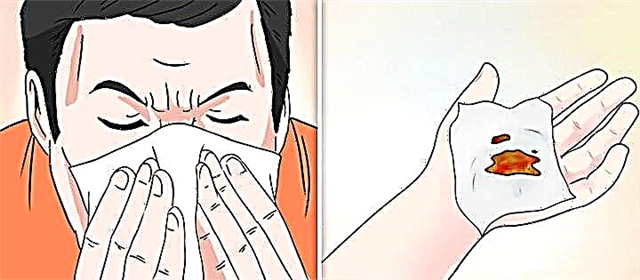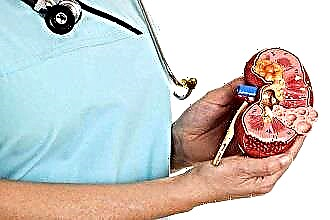Appeared, previously undetectable, seal in the form of a painless ball or painful bump behind the ear on the back of the head during palpation can manifest itself in different ways - move under the skin with pressure or in a tight adhesion with surrounding tissues felt as edema or swelling behind the ear.
What to do if bumps appear behind the ears, which doctor should I contact, how and what to treat?
Identification problem
 In an adult and a child, the reasons for the occurrence of such an education can be:
In an adult and a child, the reasons for the occurrence of such an education can be:
- sore skin of an inflammatory nature,
- blockage of the sebaceous gland passages,
- swelling and inflammation of the salivary glands,
- tumor-like skin and bone diseases,
- post-traumatic changes.
The problem is that people describe the same manifestation in different words and arbitrarily: "It is swollen behind or under the ear and it hurts, some hard lump has appeared, got out, jumped out, jumped up - what is it, doctor?" Moreover, in this case, when localization is spoken of "under" the auricle, they often mean the location and "behind" it, and placement almost on the back of the head.
Since various lymph nodes are located around the auricle - the posterior ear, occipital, parotid (near the lobe), the task of the verbal description is to specify the location of the "lump" or tumor.
At the same time, if a small bump (lump) behind or under the ear (ears) appeared or "jumped up", "got out", "swelled", which hurts when pressed, etc., it is advisable to try to give the doctor the opportunity to conduct a direct examination. Among the specialists who can be involved in assessing the patient's condition are therapist, ENT, surgeon, physiotherapist. A more definite choice depends on identifying why a lump or swelling appeared behind the ear.
Possible causes of "bumps"
 When lumps are detected behind the ears, the reasons may be as follows:
When lumps are detected behind the ears, the reasons may be as follows:
- Atheroma is a benign formation resulting from blockage of the sebaceous gland ducts.
- Tumor diseases of soft tissues and skin: hemangiomas, basaliomas, lipomas, fibromas, etc.
- Inflammation of the salivary glands and "mumps" (viral parotitis), one of the manifestations of which is an increase in lymph nodes.
- Secondary inflammatory and tumor changes in the lymph nodes: with lymphadenitis, lymphogranulomatosis, variants of leukemia.
- Bone tissue tumors: sarcomas, osteomas, myeloma
- Inflammatory skin diseases: various dermatitis, acne, boils.
- Formations associated with post-traumatic changes: bruises, burns, hematomas.
Atheroma
Signs of this benign formation are the absence of pain on palpation and adhesions of the "ball" to the skin. Even at large sizes, it does not cause any noticeable inconvenience. The patient often describes the sensation as follows: "It is swollen, like a soft lump, behind the ear, but inside it is as if the liquid is rolling over." The list of reasons for seeking medical attention is headed by an aesthetic problem and general health concerns. In this case, in the case of consent to the operation, removal of the cyst takes 15 minutes by using a laser beam or excision.
Attempts to remove the cyst on their own are unacceptable. This leads to infection (a sign of which becomes hot to the touch, bluish skin) and subsequent suppuration.
Swollen lymph nodes
 Lymph nodes in the parotid region of an adult (unlike a child) should not normally be palpated. Even an increase in the parotid group of lymph nodes in an adult is a relatively rare phenomenon and, if it does occur, it may indicate tumor diseases of the blood, accompanied by catarrhal phenomena (for example, inflammation of the mucous membrane). Soreness of the lymph nodes in a child, which occurs simultaneously with their increase and the symptoms of colds that have previously appeared, may indicate a reaction to inflammation in otitis media, colds, sore throats, etc. (lymphadenitis).
Lymph nodes in the parotid region of an adult (unlike a child) should not normally be palpated. Even an increase in the parotid group of lymph nodes in an adult is a relatively rare phenomenon and, if it does occur, it may indicate tumor diseases of the blood, accompanied by catarrhal phenomena (for example, inflammation of the mucous membrane). Soreness of the lymph nodes in a child, which occurs simultaneously with their increase and the symptoms of colds that have previously appeared, may indicate a reaction to inflammation in otitis media, colds, sore throats, etc. (lymphadenitis).
The patient should be particularly concerned if, after antibiotic treatment and after anti-inflammatory therapy, the lymph nodes have not returned to normal. By itself, this fact can become the subject of a visit to a doctor, who should conduct an additional examination to exclude an imfoproliferative disease. An additional emphasis in this case is bilateral enlargement of the lymph nodes behind the ear. In addition, enlargement of the parotid lymph nodes may result from:
- dental diseases (pharyngitis, tonsillitis, caries, inflammation of the tonsils, etc.),
- ARI,
- fungal infection.
Lipoma
If, when a tumor is found behind or under the ear, it turns out that it is a lipoma - a soft ball of adipose tissue - an oncologist's consultation is necessary, who must confirm the benign quality of the formation. The lipoma is removed surgically under local anesthesia for half an hour. It is not only more effective, but also more economical than the use of "folk" useless ointments and compresses.
Disruption of the salivary glands
An increase in the parotid salivary glands in adults can be observed with sialoadenitis (chronic inflammation), as well as with adenoma (benign tumor). The development of malignant tumors is rare.
In children, signs of malfunctioning of the salivary gland are more often associated with "mumps" (mumps). Such an enlarged gland is felt with painful sensations in front of and behind the lobe, and the skin above it is shiny. The pain when speaking and chewing increases, and the body temperature rises. Boys are characterized by painful sensations in the scrotum associated with secondary inflammation of the testicles (orchitis).
Ear fistula and median and lateral cervical fistulas
 The fistula is palpable as a hard lump on the ear (behind) on the cartilage (on the bone) along the perimeter of the cartilaginous base. It connects the oral cavity and the outer skin, but often touches the mid-ear cavity. When observed from the moment of birth, it is more often localized under the auricle, has a bluish-red tint and a size of up to 2 cm.
The fistula is palpable as a hard lump on the ear (behind) on the cartilage (on the bone) along the perimeter of the cartilaginous base. It connects the oral cavity and the outer skin, but often touches the mid-ear cavity. When observed from the moment of birth, it is more often localized under the auricle, has a bluish-red tint and a size of up to 2 cm.
Lateral and median cysts are detected below, in the neck, but with visually unchanged skin, they are detected during palpation as a hard seal. These pathologies are the result of an intrauterine malformation at the end of the first - beginning of the second month of pregnancy and the formation of the thyroid-lingual duct. Cysts of this kind can degenerate into a malignant tumor, so they should be removed.
Mastoiditis
 If the lump behind the ear on the bone in an adult patient, according to his description, is "swollen and sore", there is a high probability of developing a pathology of bacterial origin - the transition of inflammation after otitis media to the bone process. The structure of the bone tissue of the mastoideus (mastoid process) is porous, so it becomes a kind of sponge for inflammatory exudate.
If the lump behind the ear on the bone in an adult patient, according to his description, is "swollen and sore", there is a high probability of developing a pathology of bacterial origin - the transition of inflammation after otitis media to the bone process. The structure of the bone tissue of the mastoideus (mastoid process) is porous, so it becomes a kind of sponge for inflammatory exudate.
The pathological process most often begins to develop in the so-called processes of the pneumatic structure and is accompanied by:
- symptoms traditional for inflammatory processes: fever, fatigue, decreased appetite
- local pathological signs: throbbing pain with nocturnal increase in intensity, inflammation of the tympanic membrane, hearing loss, smoothing of the contours of the mastoideus, swelling of the skin at the site of the lesion.
Typical mastoiditis in the first stage is manifested by pain, mucus and fever, but atypical mastoiditis can occur without these characteristic signs.
The development of the disease threatens with hearing loss, paralysis of the facial nerve, phlebitis, thrombophlebitis and a number of intracranial consequences, therefore, treatment is carried out under the supervision of a specialist in the ENT department using antibiotics by opening the affected process.

Factors that increase the risk of bumps and tumors
Risk factors for this problem include:
- Chronic diseases of the oral cavity and upper respiratory organs: tonsillitis, sinusitis and frontal sinusitis (inflammation of the sinuses of the nose), laryngitis, stomatitis, pulpitis, etc.
- Increased secretion of the sebaceous glands without observing hygiene standards.
- Infection of the skin appendages.
- Hormonal changes and a sharp change in physiological conditions: the use of hormonal drugs, pregnancy, puberty.
- A general decrease in the immune status with vitamin deficiency, impaired heat exchange in the body, taking immunocorrectors, HIV, acute infections, chronic diseases, etc.



